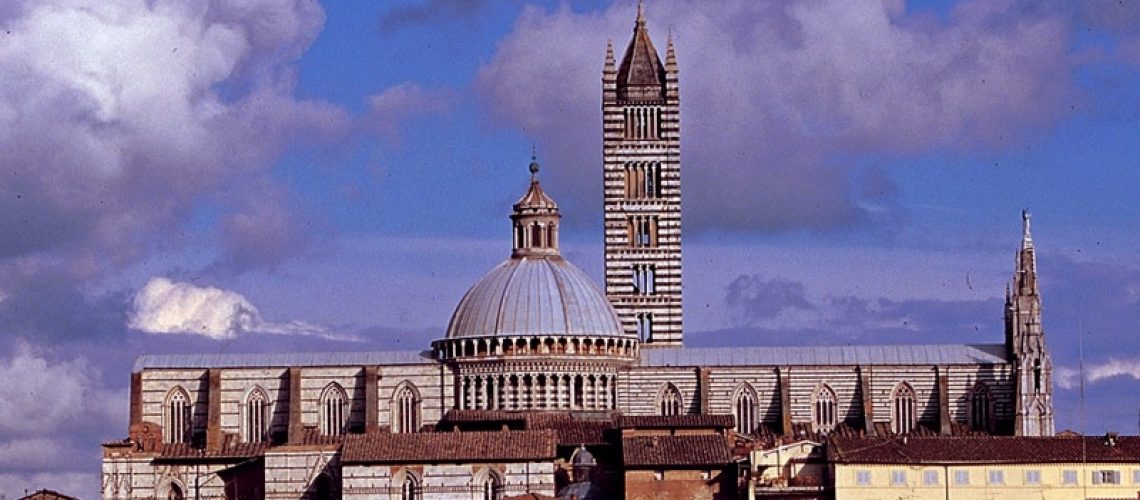Siena’s Palazzo Pubblico – literally just public building – was in the beginning a seat of political power, and now the guardian of a good part of Siena’s huge cultural, artistic and historical heritage.
Siena Palazzo Pubblico: a medieval marketing tale…
It is 1297AD. Siena is a wealthy city, rivaling with Florence for the control of Tuscany. The Republic of Siena will stand up to Florence until 1555, when it will be defeated by a Florence – Spain alliance.
But, again, in XIII Century Siena is rich, powerful and… has an inferiority complex towards Florence.
The new Palazzo Pubblico must be better, bigger, more beautiful than its Florentine counterpart (Florence will reply starting the construction of Palazzo Vecchio in 1299).#
The Palazzo Pubblico is the perfect completion of Piazza del Campo, following the curved line of the square, and a greatest example of Italian medieval architecture with gothic elements.
Siena Palazzo Pubblico: “political” frescoes
So: the Palazzo has to be impressive and, being the seat of political power, it has to remind the Siena people how great their government is… The famous fresco The Allegory of Good and Bad Government is in a way the first political manifesto of its kind, yet a beautiful piece of Senese style painting.
Painted by Ambrogio Lorenzetti between 1338 and 1339, the Allegory shows Siena as a sample of good government. We can guess that the tyrant in the Bad Government Allegory, with horns and vampyre – style teeth, is a guy from Florence 😉
Palazzo Pubblico’s Torre del Mangia: taller than Florence
The most impressive architectonic feature is the bell tower: Torre del Mangia – Mangia being the nickname “mangia guadagni” – profits waster – of Giovanni di Balduccio, the tower’s first bellringer, after is debauchery.
The Tower was the tallest one in Italy Middle Ages and it is the very symbol of Siena. Step by step, a 40 minutes climbing will let you experience an amazing view of Siena and its surroundings.

